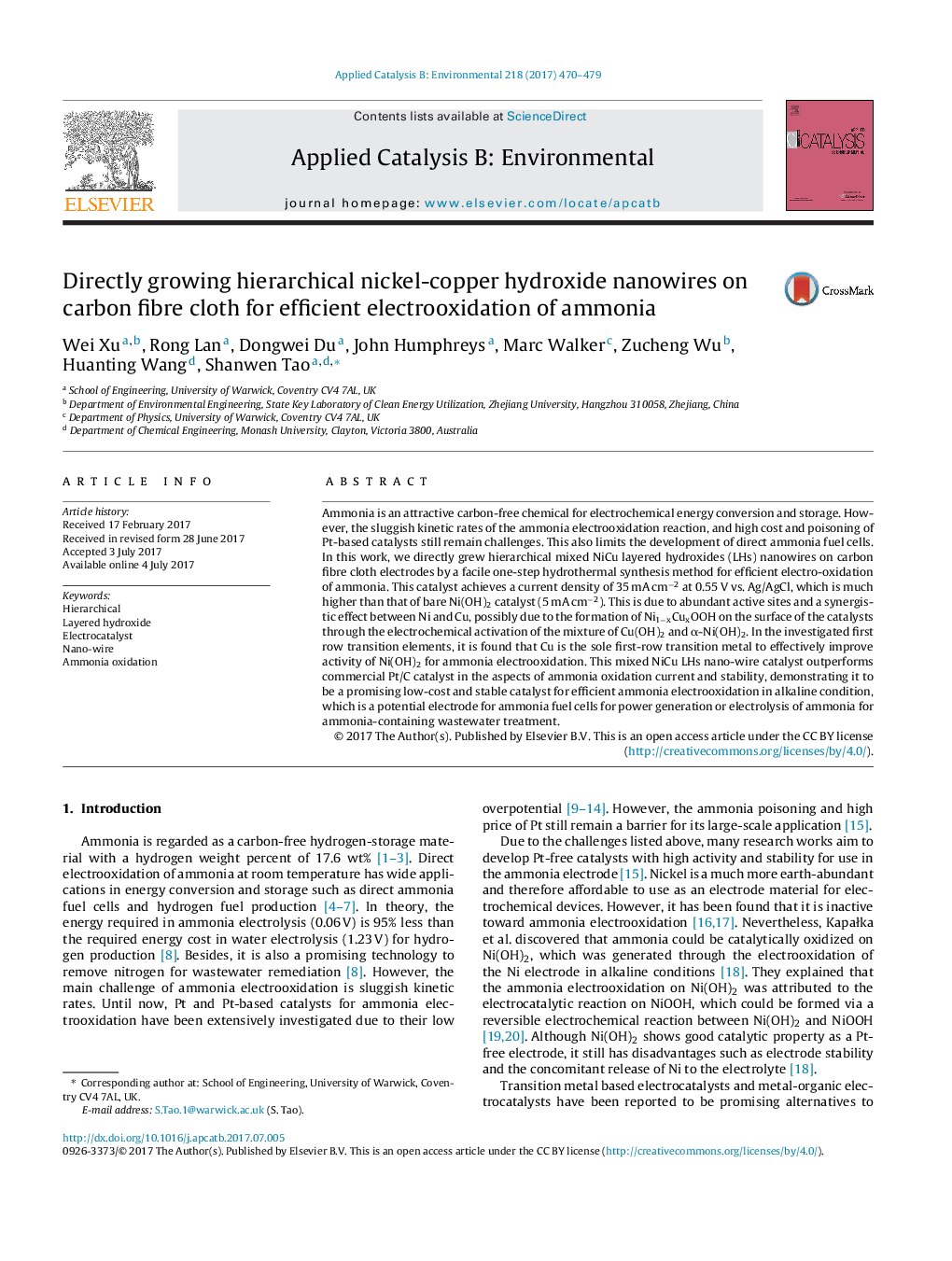| Article ID | Journal | Published Year | Pages | File Type |
|---|---|---|---|---|
| 6453779 | Applied Catalysis B: Environmental | 2017 | 10 Pages |
â¢Hierarchical nickel-copper hydroxide nanowires on carbon cloth were synthesised.â¢Nickel-copper hydroxide is a stable non-noble catalyst for electrooxidation of ammonia.â¢This mixed Nickel-copper hydroxide catalyst outperforms commercial Pt/C catalyst.â¢The current density of Nickel-copper hydroxide is seven time of that for bare Ni(OH)2.
Ammonia is an attractive carbon-free chemical for electrochemical energy conversion and storage. However, the sluggish kinetic rates of the ammonia electrooxidation reaction, and high cost and poisoning of Pt-based catalysts still remain challenges. This also limits the development of direct ammonia fuel cells. In this work, we directly grew hierarchical mixed NiCu layered hydroxides (LHs) nanowires on carbon fibre cloth electrodes by a facile one-step hydrothermal synthesis method for efficient electro-oxidation of ammonia. This catalyst achieves a current density of 35 mA cmâ2 at 0.55 V vs. Ag/AgCl, which is much higher than that of bare Ni(OH)2 catalyst (5 mA cmâ2). This is due to abundant active sites and a synergistic effect between Ni and Cu, possibly due to the formation of Ni1âxCuxOOH on the surface of the catalysts through the electrochemical activation of the mixture of Cu(OH)2 and α-Ni(OH)2. In the investigated first row transition elements, it is found that Cu is the sole first-row transition metal to effectively improve activity of Ni(OH)2 for ammonia electrooxidation. This mixed NiCu LHs nano-wire catalyst outperforms commercial Pt/C catalyst in the aspects of ammonia oxidation current and stability, demonstrating it to be a promising low-cost and stable catalyst for efficient ammonia electrooxidation in alkaline condition, which is a potential electrode for ammonia fuel cells for power generation or electrolysis of ammonia for ammonia-containing wastewater treatment.
Graphical abstractDownload high-res image (78KB)Download full-size image
